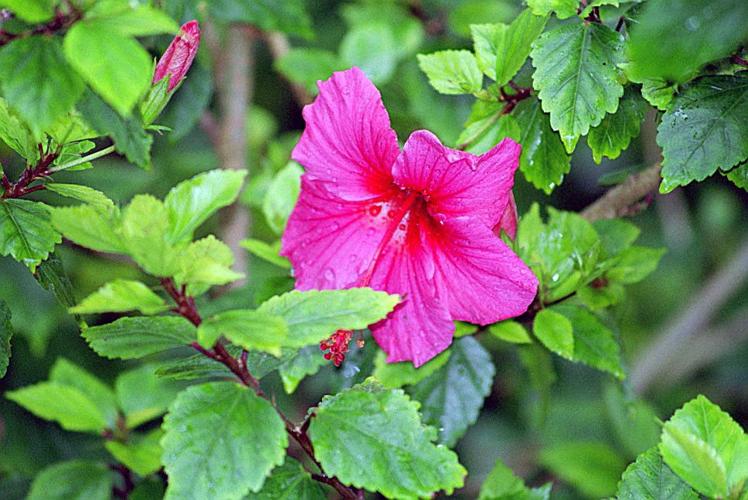Question: My yard in downtown Tucson has been devoid of bees and butterflies this spring and summer, the first time in seven years here that there has been a noticeable lack of insects. There are very few to no moths or mosquitoes in the evening — outdoor lights at night illuminate no insects hovering about. Even the bat population is nonexistent because there are no bugs for the bats to eat. I am wondering if anyone else in Tucson, or near the downtown Tucson area, has noticed the lack of pollinators this year. I also wonder if any kind of municipal spraying has contributed to the lack of insects this year.
Answer: I can’t speak for everyone, but my midtown environment is loaded with insects and bats. Each area is potentially subject to a variety of influences such as irrigation, weather, available food plants, available bat habitat and pesticides. It’s hard to say why your yard is devoid of all these creatures without more information about what is and has been going on with regard to your landscape and the surrounding area. In my conversations with the city departments that manage the municipal landscape I learned that they use very few insecticides on city property so that is not likely the reason.
Q: This past year I bought a healthy hibiscus and put it in a 5-gallon pot. I watered the plant, fed it, etc. The hibiscus looks healthy but it hasn’t given me any flowers. I don’t know what I am doing wrong. I am wondering is it possible that the soil just isn’t good?
A: There are a few reasons why plants don’t bloom and they mostly have to do with basic needs: light, water, and soil. Make sure your plant is located in a spot where it will receive the sunlight it requires. Hibiscus is a plant that does well in the sun but not always in the desert sun. Depending on which hibiscus you planted, it might be best at an east-facing window to provide enough sun and still protect it from the intense western sun in the afternoon. This plant also requires well-drained soil so make sure your pot has a way to drain in case you add too much water. Adding fertilizer to your irrigation water will help keep the nutrients available. Containers don’t hold fertilizer as well because they require more frequent watering. Watering should be done before the soil completely dries. You can just poke around with your finger to test if the soil is still moist below the surface.
Q: I am sending two photos of my desert willow tree, now in its fourth spring. The buds form, grow and then dry out before opening. Have taken samples to Mesquite Valley. They saw no evidence of pests or disease and recommended more water and fertilizer. The leaves seem smaller, shorter than others I see. I don’t want to give up on it. Any advice?
A: Based on the photos, I agree with Mesquite Valley. Smaller leaf size and dropping buds and flowers are symptoms of drought. If you aren’t already doing so, make sure it gets water every two or three weeks to a depth of 24 to 36 inches during the spring, fall, and summer. Obviously, you can skip that during the monsoon season if it receives sufficient rain. These plants don’t require a lot of fertilizer so that might not be required more than once in the spring and then again in the fall.
Q: We are curious to know the identity of a tree we saw in a park, surviving the Southwest climate that has leaves that look like a maple and a round spiky seed pod. Can you tell us?
A: I am guessing you saw a sycamore tree. Sycamore trees are found across the U.S. The native variety we have in Arizona is sometimes called the Arizona sycamore (Platanus wrightii). It is also possible to find the hybrid London plane tree (Platanus x hispanica) in these parts. The Arizona native leaf shape looks more like the California native western sycamore (Platanus racemosa) and some say they are the same tree with variations due to the geographical separation between Arizona and California. The eastern American sycamore (Platanus occidentalis) more closely resembles the London plane tree in leaf shape. TMI? All these are fairly large trees for their habitats and they require lots of water to survive. In their native habitat, they are found growing near water. They are considered tough urban trees so you can find them in shopping centers but they are often stressed by the surrounding hardscape and don’t live as long as their rural relatives.





